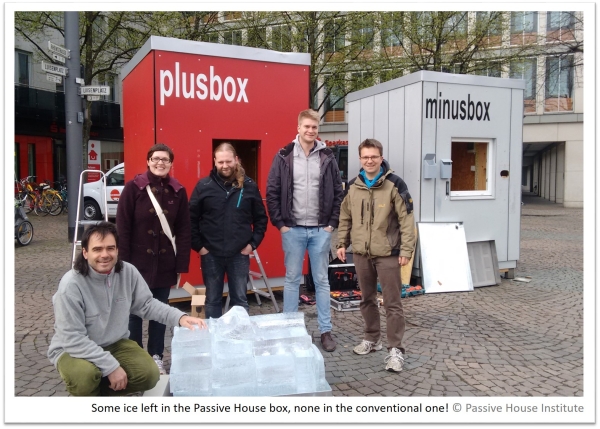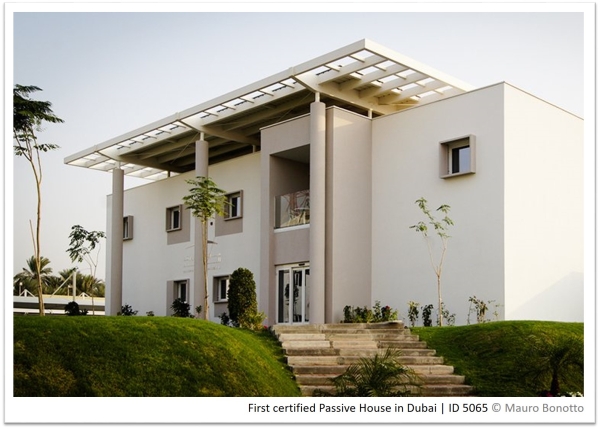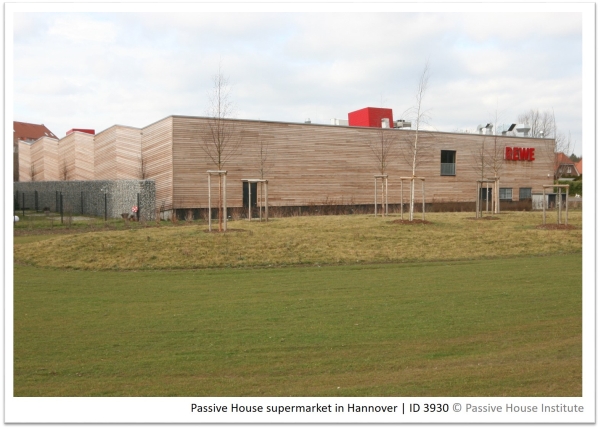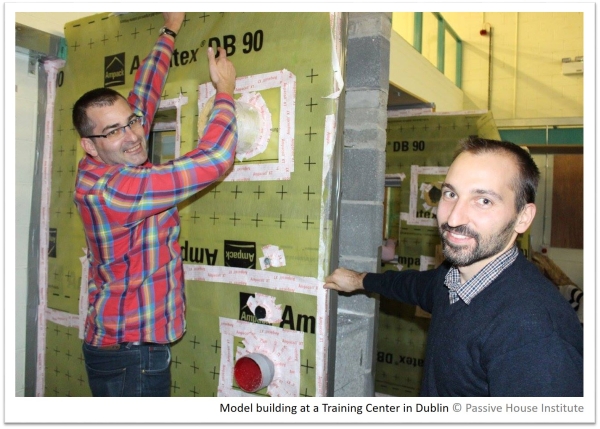5. How to foster Passive House
| Site: | Passive House Online Training | Passive House Institute |
| Course: | Passive House for Decision makers |
| Book: | 5. How to foster Passive House |
| Printed by: | Guest user |
| Date: | Thursday, 30 October 2025, 5:28 AM |
1 - Video presentation
TRANSCRIPT
The Passive House standard is a great solution for climate change. But how can we move forward from words to meaningful actions? Let‘s get some inspiration!
Authorities can lead the way by building a convincing and vibrant pilot project. This will grant citizens the experience of energy-efficient homes, schools and offices… and destroy old prejudices! For instance, did you know that you can open windows in Passive House buildings? You can also foster energy-efficient building by acknowledging the Passive House standard as an NZEB solution and accept PHPP simulation as a proof of quality and for code compliance. Don‘t forget to request third party quality assurance to ensure energy-efficiency targets are met!
Wise subsidies and better loan rates also help to stimulate the market. Investments in energy efficiency are very well positioned to be profitable over the entire lifecycle of the projects. However, it is very important to support high energy efficiency measures only. Anything else will foster buildings of intermediate performance that will still consume quite a bit of energy over the decades to come. If you build energy-efficient buildings correctly from the start, it will only incur marginal investment costs that can be recovered over time from increased energy savings. But if you don‘t put the optimal insulation thickness in correctly now, you will have to wait until the end of the components life time to cost effectively improve the building envelope and further reduce the energy demand. So do it right or rather wait for the right time to retrofit.
A reduction of energy consumption by 50% sounds deceptively large, but we won‘t achieve the reduction target for 2050 that way. Instead, the energy consumption will remain at 50% of today‘s level untill 2070, when the next refurbishment cycle will probably begin. The Passive House standard will in the long term yield the much better result and avoid the lock-in of intermediate quality.
To finance energy-efficiency related investment costs, you can draw from the proKlima fund strategy. Every euro of financial support helps trigger 12.7€ in investments and thus saves a lot of CO2 emissions! The construction sector is the main beneficiary of spending on energy efficient buildings. Extra tax payments from increased turnover of these local businesses can cover expenses for incentives. Combined with qualification programmes, many people can find new jobs.
Last but not least, spread the Passive House knowledge around you! All participants involved in the process should receive appropriate training. Keep in mind that it is all about quality! Thanks to some financial support, building professionals can be trained at universities, vocational schools and specialised training centers. Don‘t forget city planners! They should allow for buildings to enjoy sufficient solar gains and leave room for renewable energy integration. In addition, why not dedicate municipal land to Passive House construction? Municipality-owned land may be sold only on condition that Passive House buildings be built. Users should also be well informed before they build a house and when they finally move into their Passive House! There are many ways to convey information, be it through fairs, exhibitions, open doors or even entertaining competitions!
It is also better to convince people, rather than just making it mandatory! That‘s the best way to reach a sustainable energy-efficient future.
TO REMEMBER
- Lead the way with pilot projects
- First hand experience
- Accept PHPP simulation
- Acknowledge PH as an NZEB solution
- Wise subsidies and better loan rates
- Support high energy efficiency only
- Do it right or wait for the right time to retrofit!
- Extra tax payment to finance incentives
- Spread information
- Foster training for all building professionals
- Convince people through fairs, open doors
2 - Further material
Go for pilot projects!
The best working market instrument is direct experience. Exemplary pilot projects delivered by local authorities provide valuable information about the applicability and effectiveness of the Passive House standard. Moreover, they play a great role as information and know-how exchange hubs, as they are transferring effective solutions and approaches onto the actual building site.
These projects should best be certified and monitored, to provide users with the feedback they need, for instance about the enhanced air quality, consistent temperatures and humidity levels, amount of energy saved etc. In addition, monitoring helps to quickly identify failed components or errors in the building services operation (too high ventilation air flows, heater on during summer).
Such pilot building and monitoring projects already lead many cities and administrative districts to stipulate the Passive House standard in their building regulations. Some went even further, like the city of Vancouver, where regulations on density, height and setbacks were adapted to make Passive House more attractive. As Lloyd Alter from Treehugger explains "Going Passivhaus makes builders eligible for extra density, meaning extra units, meaning extra profit. Passivhaus pretty much pays for itself."
Wise subsidies
It is usually most economically attractive to add some insulation when the plaster starts to crack, so you’d better put the optimal amount of insulation right from the start! To help finance higher investment costs related to better quality products and more detailed planning, several financial programmes for Passive Houses and EnerPHit retrofits are currently offered at the city, regional and national levels.
Some famous examples are the KfW Bank funding scheme, which offers low and fixed interest loans with no repayment in principal required during the first several years, or the Climate Protection Fund “proKlima”. The proKlima fund operates on the basis of public-private partnership since 1998. It helped to save more than 118,000 tons of greenhouse gas emissions per year so far!Awareness raising activities

To foster the uptake of energy-efficient buildings, we need to stimulate the public demand. Changes in habits and social values may require time and effort, but there are many ways to raise the awareness of end-users, such as demonstration activities, consulting services and building of trust within the local communities.
You can reach a broader audience by organising entertaining activities beside technical workshops, like the Belgian advertising initiative “Are you normal?”. Its aim was to show through moving advertising and a quiz that nowadays Passive House is a mainstream practice – the only special thing about it is the inhabitant. An “iceblock challenge” guessing competition is also a great way to illustrate firsthand the benefit of good building insulation, by showing how rapidly ice is melting in a non-insulated cabin in comparison to a well-insulated one during the summer months. Another unconventional way to reach a new target group may also be throughTraining to secure quality
Besides informational sessions and forums, it is important to make energy-efficient construction part of the educational systems and provide vocational training opportunities to all building professionals. Public officials should also be addressed, for instance through custom one-day training sessions, like it was done for more than a hundred City of Vancouver staff (plan checkers, rezoning planners, development planners, etc).
Local authorities can foster training by providing subsidies for education as well as adequate training facilities. The Building Knowledge Hubs developed during the European project Train-to-NZEB are a great example to follow, as these modern training facilities enable the conduction of both theoretical programmes and practical exercises. Thanks to full-scale models, students can have a look at the different layers of a Passive House construction, as well as practice installing insulation, the airtight layer and even perform a blower door test, to better prepare for the challenges they will have to face in real life.


